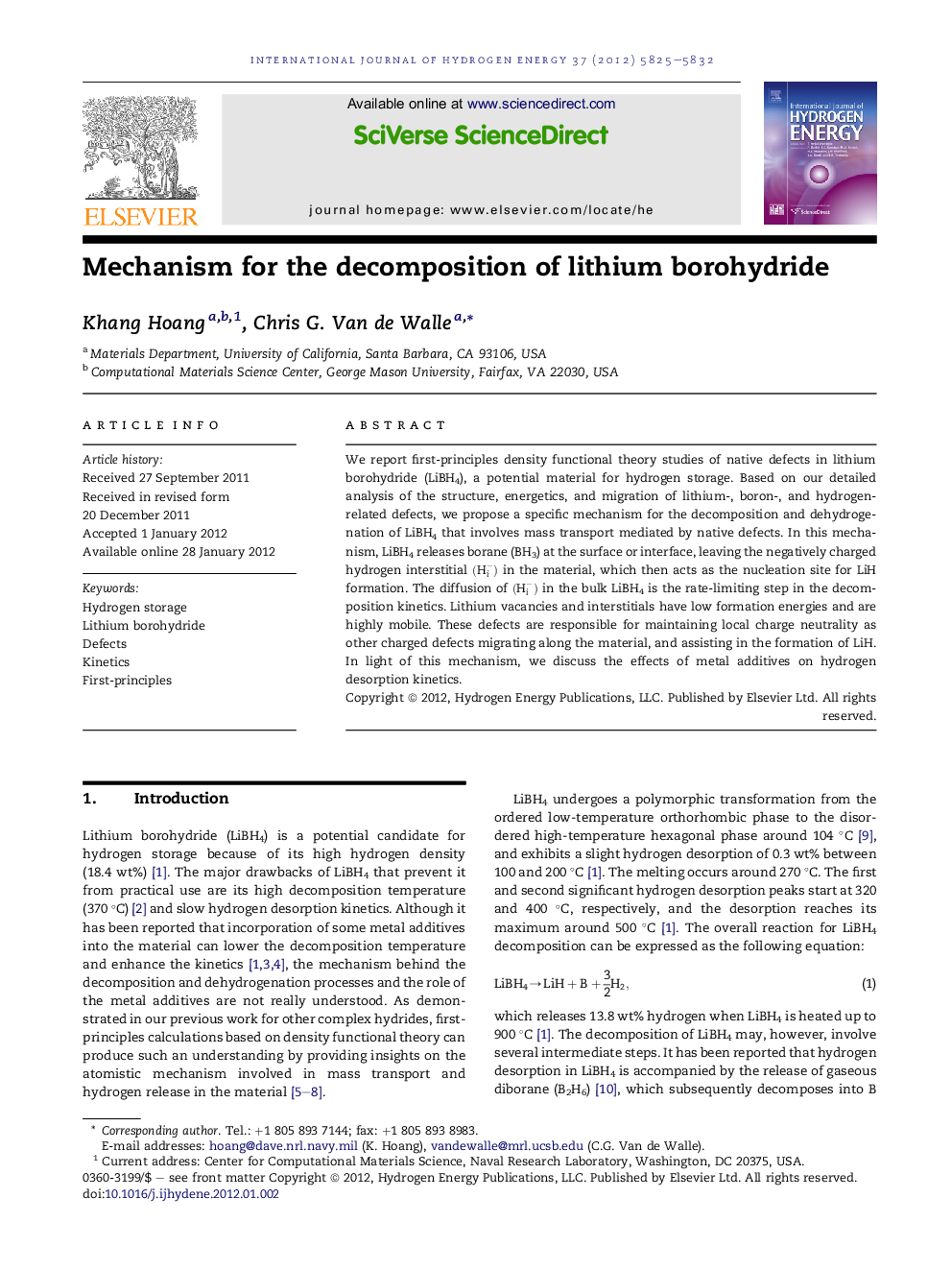| Article ID | Journal | Published Year | Pages | File Type |
|---|---|---|---|---|
| 1276874 | International Journal of Hydrogen Energy | 2012 | 8 Pages |
We report first-principles density functional theory studies of native defects in lithium borohydride (LiBH4), a potential material for hydrogen storage. Based on our detailed analysis of the structure, energetics, and migration of lithium-, boron-, and hydrogen-related defects, we propose a specific mechanism for the decomposition and dehydrogenation of LiBH4 that involves mass transport mediated by native defects. In this mechanism, LiBH4 releases borane (BH3) at the surface or interface, leaving the negatively charged hydrogen interstitial (Hi−) in the material, which then acts as the nucleation site for LiH formation. The diffusion of (Hi−) in the bulk LiBH4 is the rate-limiting step in the decomposition kinetics. Lithium vacancies and interstitials have low formation energies and are highly mobile. These defects are responsible for maintaining local charge neutrality as other charged defects migrating along the material, and assisting in the formation of LiH. In light of this mechanism, we discuss the effects of metal additives on hydrogen desorption kinetics.
► Comprehensive first-principles study of native point defects and defect complexes. ► Mechanism for the decomposition that involves defect-mediated mass transport. ► Explanation for the effects of metal additives on the hydrogen desorption kinetics.
